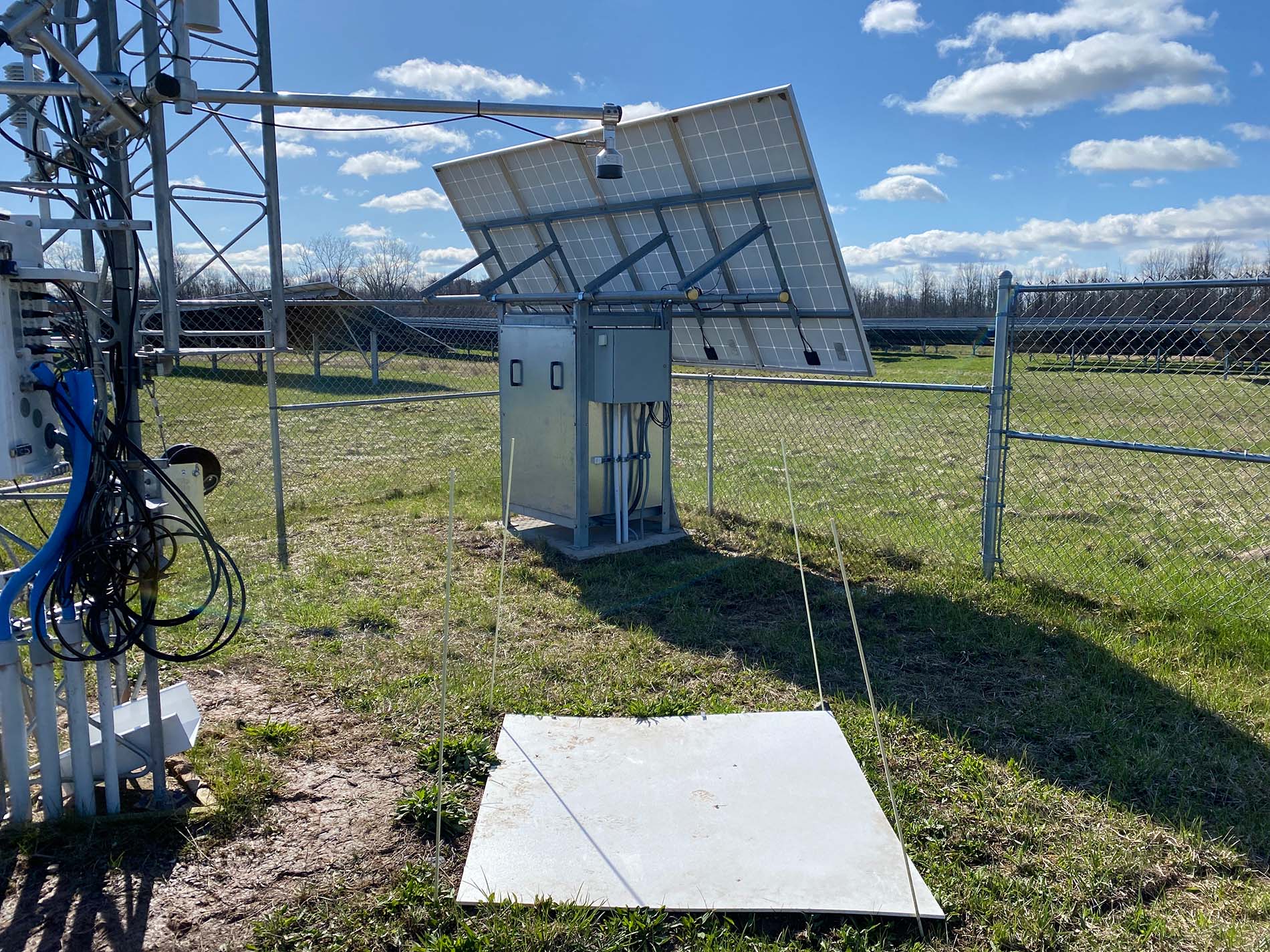NYS Mesonet, COE Researchers Track Historic Buffalo Snowstorm
By Mike Nolan
ALBANY, N.Y. (Nov. 22, 2022) — A multi-day lake-effect winter storm buried parts of western New York over the weekend bringing historic snowfall totals to the Buffalo area — including several New York State Mesonet sites.
A total of 10 Mesonet sites recorded a maximum snow depth of more than 20 inches over the weekend, led by the Thruway site in the Town of Hamburg in Erie County, which recorded just under 40 inches. A total of seven sites broke sub-freezing hourly precipitation records, including East Aurora, which set its highest mark for daily precipitation. The Mesonet site in Brant recorded a high of 6.2 inches of snow per hour on Friday.
Improving Situational Awareness
Headquartered at the University at Albany, the NYS Mesonet is the nation’s most advanced and largest early warning weather detection network, with at least one weather station located in each of New York’s 62 counties. Its standard network consists of approximately 126 weather stations, spaced roughly 19 miles apart.
Each standard station offers real-time updates on weather variables including precipitation, snow depth and temperature, along with camera images that are updated every five minutes during the day and every 15 minutes at night. An additional network of 20 snow sites also measures snow water equivalent and the total weight of snow.
The network recently launched a Winter Weather page that offers continuous, statewide updates on winter weather-related variables such as snow depth, recent snow accumulation and precipitation type.

Snow totals are updated automatically using a sonic wave sensor that measures the distance between the sensor and snow surface by sending ultrasonic (higher frequency than audible soundwaves) pulses towards the ground and recording the time it takes to receive a return signal.
“During a storm like this one, the Mesonet offers New Yorkers a unique opportunity to track snowfall numbers in real-time, with updates every five minutes, including a visual through our on-site camera,” said June Wang, NYS Mesonet interim program manager. “This is not only an important tool for emergency managers, but also individuals who might be wondering, for example, if road conditions are safe enough to drive on or what the visibility might be like. Everyone can benefit from following our network.”
Assisting New York’s Emergency Operations
Along with providing situational awareness around extreme weather, researchers at the NYS Mesonet and UAlbany’s Center of Excellence in Weather & Climate Analytics (COE) also regularly meet with state agencies and emergency managers to provide critical storm updates that can help with response efforts.
Nick Bassill, COE’s director of research and development, met with leaders at the NYS Division of Homeland Security and Emergency Management (DHSES) several times during the Buffalo snowstorm, giving them updates to share with western New York’s stand-up Regional Operations Center.
“Our goal in these meetings was really to provide the latest weather information available,” said Bassill. “Through our briefings, we were able to synthesize data from the NYS Mesonet and other sources to provide real-time updates and forecasts of snowfall numbers, wind gusts and other relevant data that could help emergency managers with decision-making during the storm.”
The COE’s sole focus is on creating innovative tools that can be used to better understand and respond to New York’s changing climate and increasingly frequent extreme weather events.
For example, COE researchers are working with the New York State Energy Research and Development Authority to develop customizable forecasting tools that offer utility partners real-time predictions on power outages, electrical load and renewable energy generation. They are also providing the state Department of Transportation with forecasting tools to remove snow and ice from the highways more efficiently.
You can hear more about the NYS Mesonet and COE’s role in helping New Yorkers prepare for the Buffalo snowstorm on Spectrum News.




